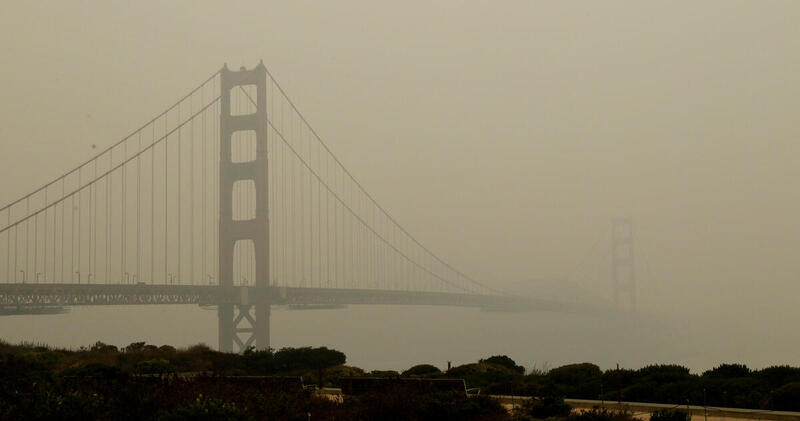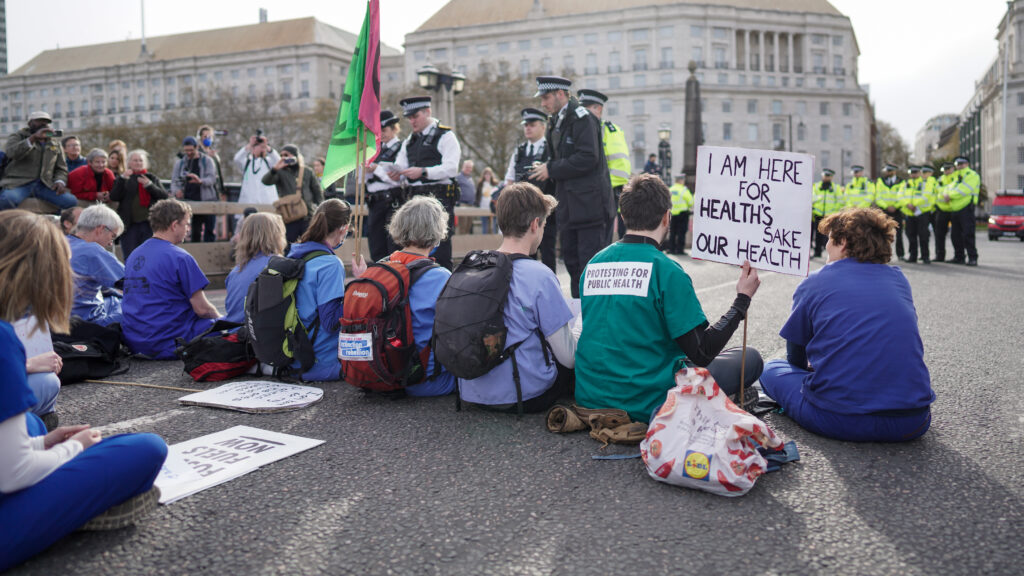
California Wildfire Smoke Obscures San Francisco, 10 September 2020. © George Nikitin / Greenpeace
San Francisco, 17 September 2020:- Reacting to the ongoing wildfire crisis in California, Washington and Oregon, Frances MacGuire, Science and Policy Lead for the Global Climate and Health Alliance (GCHA) said
“It is clear that the US wildfires are one of the new faces of the climate crisis. Emergency services are doing an amazing job battling the fires, but the toxic air pollution generated by the fires is also a health hazard, and a problem which must not be ignored.”
Wildfires cause air quality to plummet, often creating the worst air quality people living in high income countries experience [1]. Children, older people, people with pre-existing lung or heart diseases are vulnerable along with pregnant women. In the 2019/2020 Australian bushfires, breathing related hospital admissions increased by 34% in New South Wales [2]. Also in 2019, fires in the Brazilian Amazon were estimated to cause a 65% increase in hospital admissions linked with respiratory illness [3].
Air pollution from forest fires is estimated to cause more than 300,000 premature deaths per year globally [4], including perhaps as many as 15,000 in the US [5].
Currently, the US faces one of the highest global death tolls from Covid-19. The pandemic coupled with pollution from wildfires spells disaster for hundreds and thousands of Americans.
“The Global Climate and Health Alliance calls on governments around the world to address climate change and reduce the health impacts of forest fires and smoke pollution. Governments and industry must take systemic action on climate change. Meanwhile, clinicians should be talking with their high risk patients about how to protect themselves from wildfire smoke”, said MacGuire.
“The Global Climate and Health Alliance is currently investigating the impacts of wildfire smoke in Australia, Brazil and Canada, where recent exceptional forest fires have been linked with climate change and deforestation for agriculture, and will be publishing our findings in the coming months”, she added.
ENDS
Notes
[1] Henderson, B. (2020). The COVID-19 Pandemic and Wildfire Smoke: Potentially Concomitant Disasters. Am J Public Health. 2020 August; 110(8): 1140–1142.
[2] NSW Health again issues warning on bushfire smoke https://www.health.nsw.gov.au/news/Pages/20200108_00.aspx
[3] Human Rights Watch (2020) The Air is Unbreathable: Health Impacts of Deforestation-Related Fires in the Brazilian Amazon. https://www.hrw.org/news/2020/08/26/brazil-amazon-fires-affect-health-thousands
[4] Johnston, F.H. et al., (2012). Estimated Global Mortality Attributable to Smoke from Landscape Fires Environ Health Perspect. 2012 May; 120(5): 695–701.
[5] Ford, B. et al., (2018). Future Fire Impacts on Smoke Concentrations, Visibility, and Health in the Contiguous United States. GeoHealth, 2018; DOI: 10.1029/2018GH000144
Contacts:
Dave Walsh, Communications Advisor, Global Climate and Health Alliance, +34 691 826 764 [email protected]
Who We Are
The Global Climate and Health Alliance is an alliance of health NGOs and health professional organizations from around the world.
https://climateandhealthalliance.org

